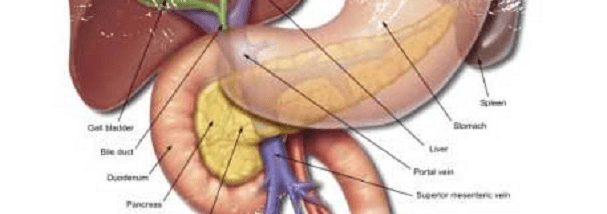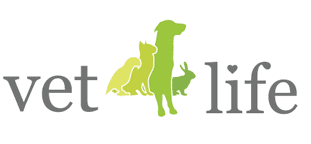 Jade the puppy presented to the clinic as an emergency because she appeared to have suddenly gone blind. She was also circling, staring into space, generally unresponsive and pressing her head against the corners of the room. She was also quite thin and had various other signs such as diarrhoea over the weeks before she came to the clinic.
Jade the puppy presented to the clinic as an emergency because she appeared to have suddenly gone blind. She was also circling, staring into space, generally unresponsive and pressing her head against the corners of the room. She was also quite thin and had various other signs such as diarrhoea over the weeks before she came to the clinic.
We suspected a Portosystemic Shunt (PSS). This is when an abnormal vessel allows blood from the intestines to bypass the liver. The pet can be born with the shunt or it can develop later on in life. Most cases are congenital, as was this one.
The portal vein takes blood from the intestines and stomach to the liver for detoxifying. In affected animals the shunt allows the blood to bypass the liver. As a result, the blood is not cleansed and toxins may build up in the bloodstream or kidneys. The liver will only get 15% of the blood it would normally receive. Hence animals are slow to grow and can be affected, especially due to the absorption of ammonia and other nitrogenous compounds as a result of bacterial activity in the small intestine. The liver performs may other tasks in addition to filtering the blood , these include generation of heat, production of clotting factors and production of blood proteins such as albumin. All of these functions can be severely affected in animals with a PSS.
We first had to diagnose Jade's shunt on blood work. Dogs with hereditary liver shunts usually have low blood urea nitrogen and albumin concentrations. They may be slightly anaemic or have small red blood cells. Sure enough, when we checked Jades albumin, it was so low we thought our machine was broken!
The low albumin told us we had to measure bile acid concentration both before and after a meal to evaluate Jades liver function. Dogs with liver shunts have increased bile acid concentrations because the liver does not get a chance to remove and store these after they are reabsorbed from the small intestine. In addition, ultrasound examination of her abdomen revealed a small liver and a single solitary anomalous blood vessel entering the caudal Vena Cava.
Jade was stabilised with medication and given a special diet over several weeks which allowed her to put on weight and get into a better shape for her operation. The surgery went very well. We found the abnormal blood vessel and wrapped a cellophane band around the shunt which will cause fibrosis and close the shunt over time. This will prevent rapid changes of blood pressure within her gastrointestinal system.
 Jade is doing very well post-surgery. She will be kept on a protein-restricted diet for at least 6-8 weeks and her liver function closely monitored.
Jade is doing very well post-surgery. She will be kept on a protein-restricted diet for at least 6-8 weeks and her liver function closely monitored.
Well done Jade.... well deserving of our Big Bear Award.


